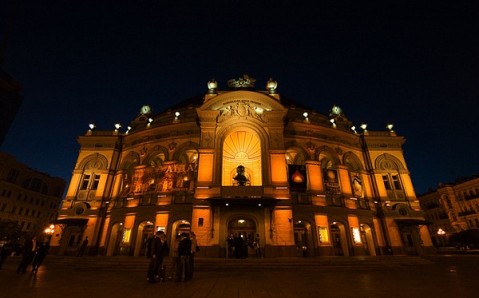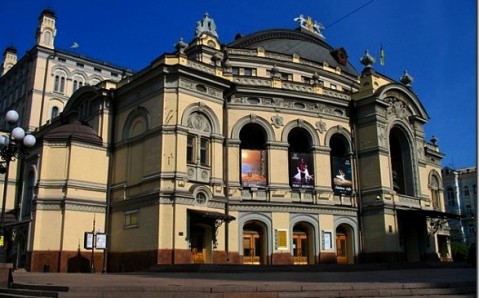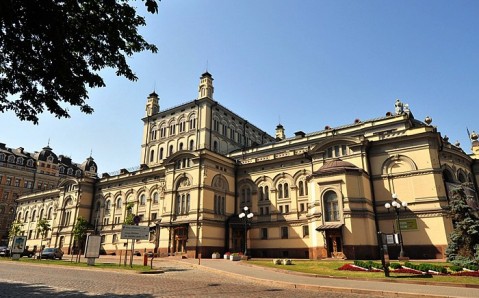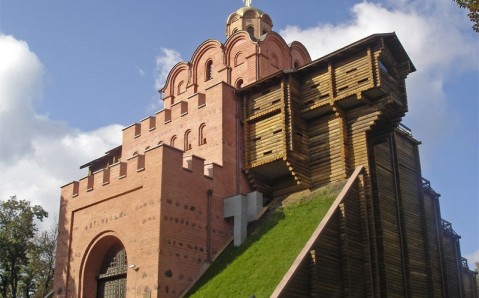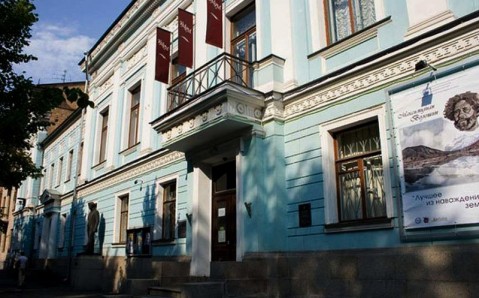National Opera of Ukraine
The National Opera of Ukraine is the largest musical theater in the country and one of the most famous opera and ballet stages in Europe. Its luxurious building, fortunately fitted into the ancient ensemble, is considered to be capital’s true architectural gem.
The first professional opera troupe was formed in Kyiv in the second half of the 19th century and was considered one of the best theatrical teams in the Russian Empire on par with Moscow’s and St. Petersburg’s ones. At the same time the need for opera stage arose. At first, the Kyiv opera troupe occupied the premises of the City Theater, but after the major conflagration of 1896, which almost completely destroyed the building, the question about Opera Theater’s construction had to be solved as soon as possible.
Five years later, the elegant Kyiv Opera building in the French Renaissance style was raised on the place of the burnt down City Theater. Its pompously decorated hall consisted of parterre, amphitheater, dress circle and four tiers, and could hold up to one and a half thousand viewers. Interior’s decoration was dominated by velvet and bronze; theater’s room was illuminated with magnificent crystal chandeliers, custom-made in Vienna.
Building’s facade was adorned with busts of the famous Russian composers, which were granted to the Kyiv Opera by the artists of the St. Petersburg’s Mariinsky Theater (later they were pulled down on the Soviet authorities’ order). The main entrance was first adorned with the city coat of arms depicting Archangel Michael – the patron saint of Kyiv. But then, some of religious locals thought it was a blasphemy, and the coat of arms was replaced with allegorical composition: mythical griffins holding lira – the symbol of music.
We’d like to point out that the architect who designed the Kyiv Opera building was concerned not only about its appearance, but also about functionality. He made the room convenient for both, audience and artists performing on the stage. The theater had the latest (for that time) stage equipment, steam heating and air conditioning systems.
Fortunately neither time nor superseding regimes changed the magnificent architecture of the Kyiv Opera. Only in the late 20th century, when the building, raised on the place of the former ravine, gradually started to subside and cover with cracks, it was decided to reconstruct it. In addition, over almost 90 years of exploitation, theater’s constructions wore down, stage equipment went out of date, and interior decoration tarnished. As a result of restoration, it was managed not only to preserve Kyiv Opera’s facade’s and hall’s unique decoration, but also to substantially enrich it. Moreover, the new organ, custom-made by the craftsmen of the famous Czech company Rieger-Kloss, was installed in the theater.
The Kyiv Opera Theater became widely known not only due to its luxurious building and opera and ballet performances, but also due to one tragic event that happened in its walls, in the early 20th century. In 1911, the Prime-Minister of the Russian Empire Pyotr Stolypin, who attended the theater with the Emperor Nicholas II, was lethally wounded during the play “The Tale of Tsar Saltan.”
Today, the repertoire of the Kyiv Theater numbers over fifty operas and ballets, which include world classical music and works by Ukrainian authors. Some operas are performed in Italian.

 Kyiv
Kyiv
